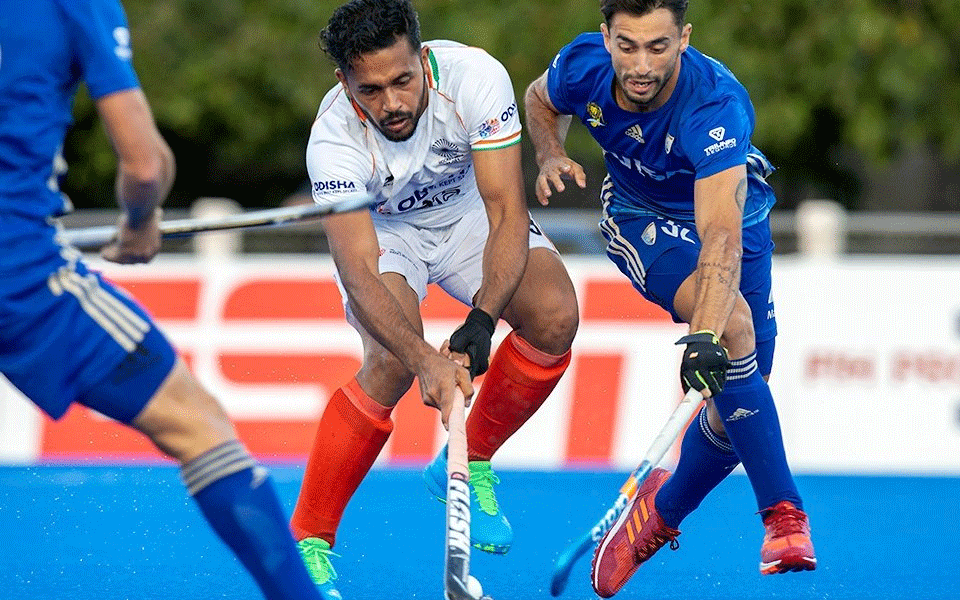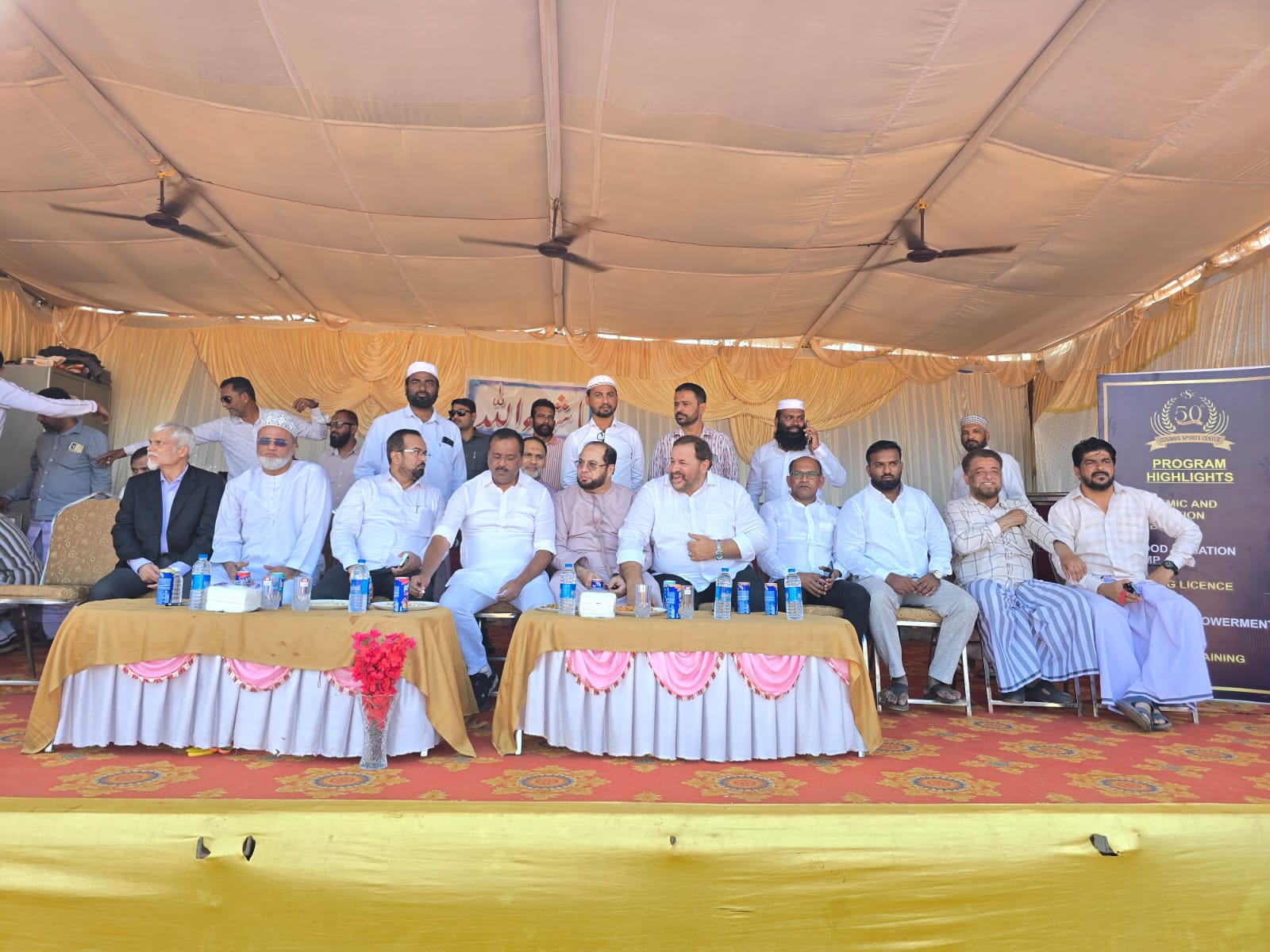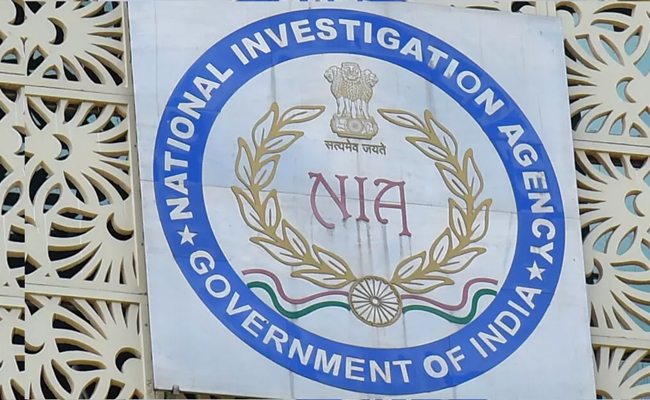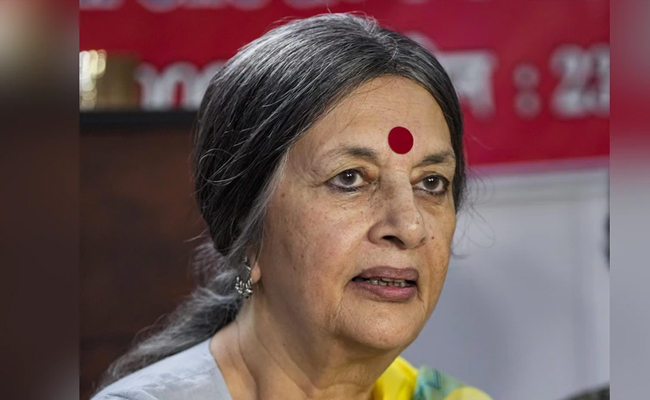Buenos Aires: The Indian men's hockey team registered a comprehensive 3-0 win over reigning Olympic champions Argentina in the second match of the FIH Pro League here to jump to the fourth spot in the points table.
Goals from Harmanpreet Singh (11th minute), Lalit Upadhyay (25th) and Mandeep Singh (58th) on Sunday gave the visitors a deserved triumph over Los Leones, adding three more points to the two they had claimed against the hosts in Saturday's shoot-out, which earned them a bonus point.
By virtue of this win, India, with 15 points from eight games, climbed up to fourth place in the FIH Hockey Pro League standings, moving one point ahead of Australia having played the same number of games.
India, Argentina and Australia will play against each other at the forthcoming Olympic Games, where they have been drawn in Pool A alongside Spain, New Zealand and home favourites Japan.
Argentina sit sixth in the FIH Hockey Pro League standings, with 11 points from 12 games.
Argentina started brightly and would have been ahead had it not been for some excellent saves from India goalkeeper Krishan Bahadur Pathak, who twice denied Martin Ferreiro.
Harmanpreet then converted India's first penalty corner of the game in the 11th minute.
Lalit doubled India's lead when he showed lightning quick reactions in the second quarter, pouncing on a save from Argentina custodian Juan Vivaldi to slot home. The strike gave the visitors a deserved reward after a lengthy period of probing possession.
The result was confirmed two minutes from the final hooter when Mandeep fired home from close range, losing his footing but keeping his composure to guide an backhand effort into the net.
"I think we defended well," said India goalkeeper Pathak, who was named Player of the Match.
"They are good in defence but we created a lot of chances. We scored the goals, so that is good for us. We have to work on a lot of things, in defence, in midfield also.
"We have to learn from this match. Today we did a lot of good things, but we still have to work (to do)."
India will next travel to Great Britain for the two-leg tie on May 8 and 9.
Let the Truth be known. If you read VB and like VB, please be a VB Supporter and Help us deliver the Truth to one and all.
Mumbai (PTI): In view of Argentine superstar footballer Lionel Messi's visit to Mumbai on Sunday, the city police are implementing stringent security measures, like not allowing water bottles, metals, coins inside the stadiums and setting up watchtowers to keep an eye on the crowd, officials said.
The police also said taking extra care to avoid any stampede-like situation and to prevent recurrence of the chaotic situation that unfolded in Kolkata during Messi's visit on Saturday as thousands of fans protested inside the Salt Lake stadium here after failing to catch a clear glimpse of the football icon despite paying hefty sums for tickets.
Messi is expected to be present at the Cricket Club of India (Brabourne Stadium) in Mumbai on Sunday for a Padel GOAT Cup event followed by attending a celebrity football match. He is expected to proceed to the Wankhede Stadium for the GOAT India Tour main event around 5 pm.
"In view of Lionel Messi's visit to Mumbai, the police are geared up and have put in place a high level of security arrangements in and around the stadiums located in south Mumbai. Considering the chaos that prevailed in Kolkata and the security breach, we have deployed World Cup-level security arrangements at Brabourne and Wankhede stadiums," an official said.
Expecting heavy crowd near the stadiums during Messi's visit, the city police force has deployed more than 2,000 of its personnel near and around both the venues, he said.
As the Mumbai police have the experience of security 'bandobast' during the victory parade of ICC World Cup-winning Indian team and World Cup final match at the Wankhede Stadium, in which over one lakh cricket fans had gathered, we are prepared to handle a large crowd of fans, he said.
"We are trying to avoid the errors that occurred in the past," the official said.
There is no place to sneak inside the stadiums in Mumbai like the Kolkata stadium, according to him.
The police are also asking the organisers to provide all the required facilities to the fans inside the stadium, so that there will be no chaos, he said, adding the spectators have purchased tickets in the range of Rs 5,000 to 25,000. After paying so much of amount, any spectator expects proper services, while enjoying the event, he said.
The police are expecting 33,000 spectators at the Wankhede Stadium and over 4,000 at Brabourne Stadium. Besides this, more than 30,000 people are expected outside and around the stadiums just to have a glimpse of the football sensation, he said.
The organisers responsible for Messi's India visit recently came to Mumbai to discuss security arrangements. During the meeting, the Mumbai police asked them not to take the event lightly, according to the official.
After those requirements were fulfilled, the final security deployment was chalked out, he said.
Police has the standard procedure of the security arrangements inside the Wankhede Stadium, where people are barred from taking water bottles, metals objects, coins. Police are setting up watch towers near the stadiums and there will be traffic diversions, so that there is maximum space available to stand, according to the official.
Police are also appealing to the spectators to use public transport service for commuting and avoid personal vehicles to reach south Mumbai.
To avoid any stampede-like situation, police are also taking precautionary measures and will stop the fans some distance ahead of the stadium and public announcement systems will be used to guide the crowd. Barricades will be placed at various places to manage the crowd.
In case the crowd swells up beyond expectation, the police will divert people to other grounds and preparations in this regard underway, he said.
Additional police force has been deployed in south Mumbai to tackle any kind of situation, he said.





